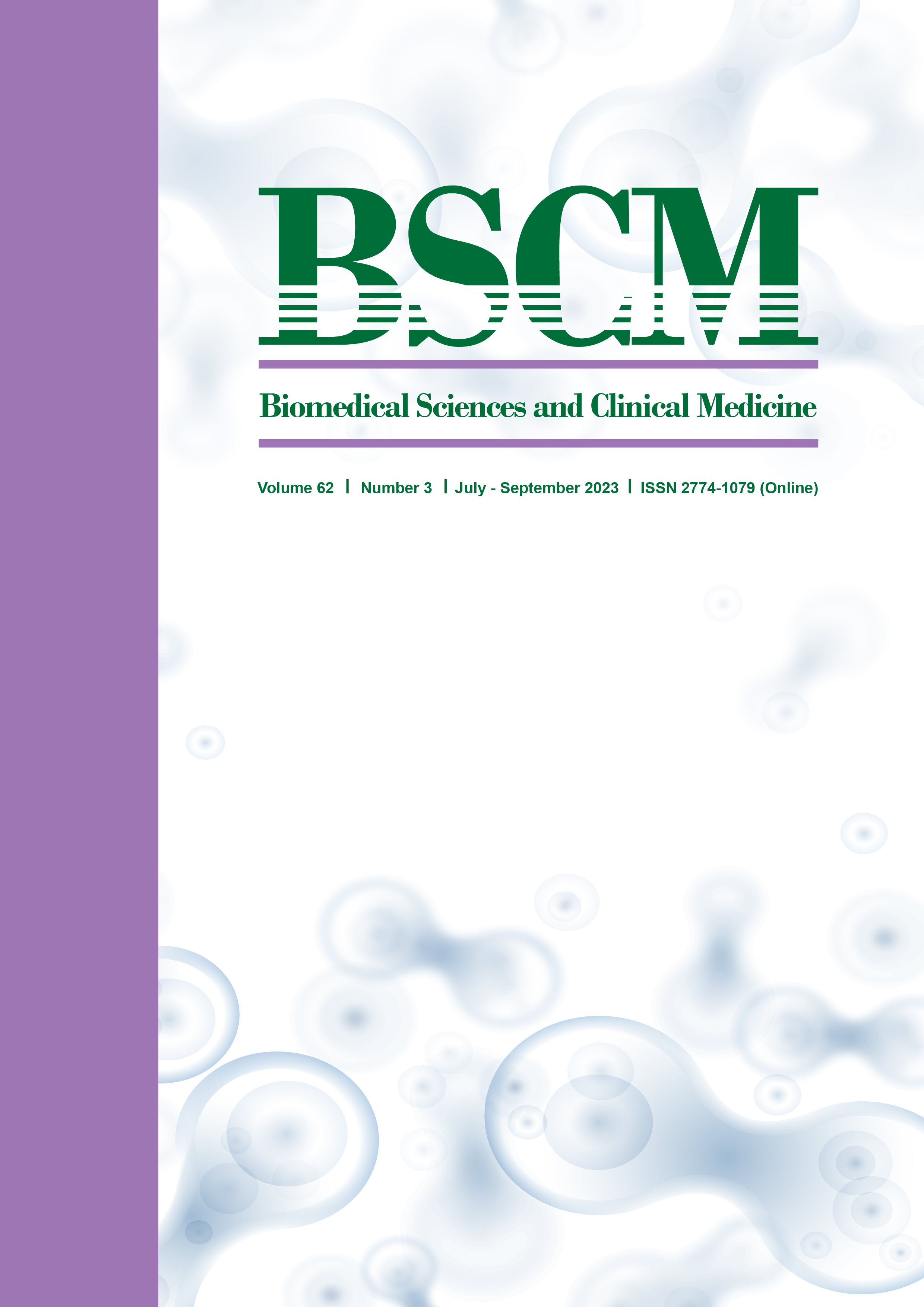Long-term Survival Outcomes of Prostate Cancer Treated by a Moderately Hypofractionation Regimen (70Gy in 28 fractions): A Single-Center Experience
Abstract
Objective This study aimed to assess the survival outcomes of localized prostate cancer patients treated with moderately hypofractionationated radiation therapy (70Gy in 28 fractions).
Methods Between 2013 and 2018, a total of 96 patients with localized prostate cancer underwent radical radiotherapy. The prescribed dose for the prostate gland was 70Gy delivered in 28 fractions. In cases where elective pelvic lymph node treatment was indicated, the prescribed dose for the elective area was 50.4Gy in 28 fractions. Patient characteristics, dose parameters, treatment outcomes, and toxicities were recorded and analyzed. Treatment results were evaluated following the ASTRO-Phoenix recommendations.
Results Out of the 96 patients, 86 were eligible for evaluation. The average age of the patients was 74 years, with 73 of the 86 patients (84.9%) categorized as high-risk. Eighty-one of the 86 patients (92.2%) received hormonal treatment. With a median follow-up time of 52 months, the 4-year biochemical control, disease-free survival, and overall survival rates were 100%, 100%, and 91.4%, respectively. Among this cohort, three patients experienced grade 3 gastrointestinal (GI) or genitourinary (GU) toxicities.
Conclusions The results of our study, utilizing 70Gy in 28 fractions for localized prostate cancer treatment, are promising and are comparable to findings reported in other publications. Only three patients in our cohort developed grade 3 or higher toxicity.
References
Dearnaley D, Syndikus I, Mossop H, Khoo V, Birtle A, Bloomfield D, et al. Conventional versus hypofractionated high-dose intensity-modulated radiotherapy for prostate cancer: 5-year outcomes of the randomised, non-inferiority, phase 3 CHHiP trial. Lancet Oncol. 2016; 17:1047-60.
Lee WR, Dignam JJ, Amin MB, Bruner DW, Low D, Swanson GP, et al. Randomized phase III noninferiority study comparing two radiotherapy fractionation schedules in patients with low-risk prostate cancer. J Clin Oncol. 2016;34:2325-32.
Aluwini S, Pos F, Schimmel, Lin Ev, Krol S, van der Toorn P, E et al. Hypofractionated versus conventionally fractionated radiotherapy for patients with prostate cancer (HYPRO): Acute toxicity results from a randomised non-inferiority phase 3 trial. Lancet Oncol. 2015;16:274-83.
Morgan SC, Hoffman K, Loblaw DA, Buyyounouski MK, Patton C, Barocas D, et al. Hypofractionated radiation therapy for localized prostate cancer: executive summary of an ASTRO, ASCO, and AUA Evidence-Based Guideline. Pract Radiat Oncol. 2018;8:354-60.
Kupelian PA, Reddy CA, Klein EA, Willoughby TR, Short-course intensity-modulated radiotherapy (70 GY at 2.5 GY per fraction) for localized prostate cancer: preliminary results on late toxicity and quality of life. Int J Radiat Oncol Biol Phys. 2001;51:988-93.
Kupelian PA, Thakkar V v., Khuntia D, Reddy CA, Klein EA, Mahadevan A, et al. Hypofractionated intensity-modulated radiotherapy (70 Gy at 2.5 Gy per fraction) for localized prostate cancer: Long-term outcomes. Int J Radiat Oncol Biol Phys. 2005;63:1463-8.
Abu-Gheida I, Reddy CA, Kotecha R, Weller MA, Shah C, Kupelian PA, et al. Ten-Year outcomes of moderately hypofractionated (70 Gy in 28 fractions) intensity modulated radiation therapy for localized prostate cancer. Int J Radiat Oncol Biol Phys. 2019;104:325-33.
Roach M, Hanks G, Thames H, Schellhammer P, Shipley WU, Sokol GH, et al. Defining biochemical failure following radiotherapy with or without hormonal therapy in men with clinically localized prostate cancer: recommendations of the RTOG-ASTRO Phoenix Consensus Conference. Int J Radiat Oncol Biol Phys. 2006;65:965-74.
Freedman-Cass D, Shead DA, Schaeffer E, Antonarakis ES, Armstrong A J, Bekelman J E, et al. NCCN Guidelines Panel Disclosures NCCN Guidelines Version 2.2021 Prostate Cancer. 2021.
Kupelian PA, Reddy CA, Klein EA, Willoughby TR. Short-course intensity-modulated radiotherapy (70 GY at 2.5 GY per fraction) for localized prostate cancer: preliminary results on late toxicity and quality of life. Int J Radiat Oncol Biol Phys. 2001; 51:988-93.
Kupelian PA, Reddy CA, Carlson TP, Altsman KA, Willoughby TR. Preliminary observations on biochemical relapse-free survival rates after short-course intensity-modulated radiotherapy (70 Gy at 2.5 Gy/fraction) for localized prostate cancer. Int J Radiat Oncol Biol Phys. 2002;53:904-12.
Abu-Gheida I, Reddy CA, Kotecha R, Weller MA, Shah C, Kupelian PA, et al. Ten-Year outcomes of moderately hypofractionated (70 Gy in 28 fractions) intensity modulated radiation therapy for localized prostate cancer. Int J Radiat Oncol Biol Phys. 2019;104:325-33.
Kim H, Kim JW, Hong SJ, Rha KH, Lee CG, Yang SC, et al. Treatment outcome of localized prostate cancer by 70 Gy hypofractionated intensity-modulated radiotherapy with a customized rectal balloon. Radiat Oncol J. 2014;32: 187-97.
Aluwini S, Pos F, Schimmel E, Krol S, van der Toorn PP, Jager H, et al. Hypofractionated versus conventionally fractionated radiotherapy for patients with prostate cancer (HYPRO): late toxicity results from a randomised, non-inferiority, phase 3 trial. Lancet Oncol. 2016;17:464-74.
Incrocci L, Wortel RC, Alemayehu WG, Aluwini S, Schimmel E, Krol S, van der Toorn PP, et al. Hypofractionated versus conventionally fractionated radiotherapy for patients with localised prostate cancer (HYPRO): final efficacy results from a randomised, multicentre, open-label, phase 3 trial. Lancet Oncol. 2016;17:1061-9.











